10 Idyllic Swimming Spots in National Parks
America’s national parks are home to numerous scenic swimming spots, whether it’s a lakeshore, ocean beach, riverbank or even hot spring.
Few things are more refreshing than jumping into a lake or swimming hole in summer, especially if it’s surrounded by idyllic national park scenery. Spending some time on a national park beach and cooling off in the ocean isn’t too bad either!
So, swap out your hiking boots for a bathing suit and hit up these beautiful swimming locations in the national parks.
10 Amazing Places to Go Swimming in National Parks
At the following national park swimming spots, you can relax your weary muscles after a long day hike, or find some respite on a hot summer’s afternoon.
Enjoying spectacular landscapes while soaking in a lake, floating down a river or jumping into waves? Sign me up!
This blog post about the amazing swimming spots in the national parks contains affiliate links. You can read more about our Terms of Use / Disclosure here.
1. Sand Beach, Acadia National Park (Maine)
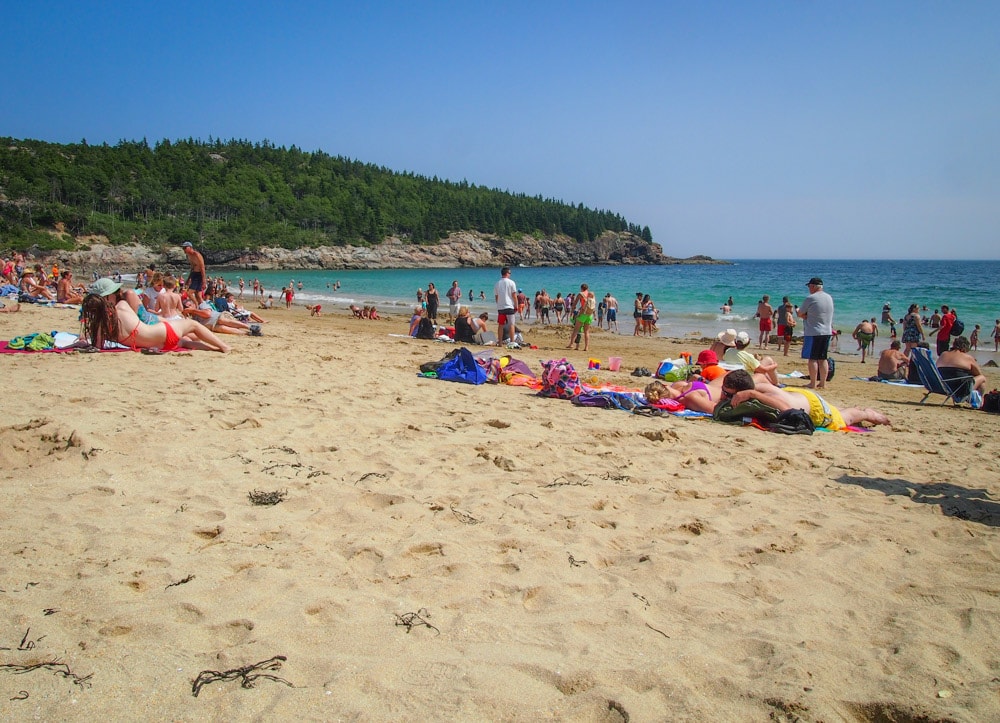
One of the most visited places in Acadia National Park, Sand Beach is the park’s only sandy beach. It’s near the start of the coastal section of the scenic Park Loop Road, accessible via a staircase.
This beautiful beach is popular for playing in the sand, sunbathing and swimming in the cold waters of the Gulf of Maine. Wildlife is occasionally spotted here, too.
Besides spending time on the beach and in the water, Sand Beach also offers great hiking opportunities. Three excellent Acadia National Park hikes start in this area: the Great Head Trail, Ocean Path and Beehive Trail.
2. Seven Sacred Pools, Haleakalā National Park (Hawaii)

Also known as the pools at ‘Ohe’o Gulch, the Seven Sacred Pools are one of the most scenic swimming spots in Hawaii. And that says something.
Located in the Kīpahulu District of Maui’s Haleakalā National Park, this series of small pools is backed by beautiful waterfalls. Palm trees and other tropical vegetation surrounds this gorgeous, yet super-popular, spot.
Note, however, that the Seven Sacred Pools can occasionally be closed to the public due to risk of flash flooding. Always be careful when swimming there and follow national park guidelines and regulations. Rockslides and flash floods can occur even if the local weather is amazing.
3. Diablo Lake, North Cascades National Park Service Complex (Washington)
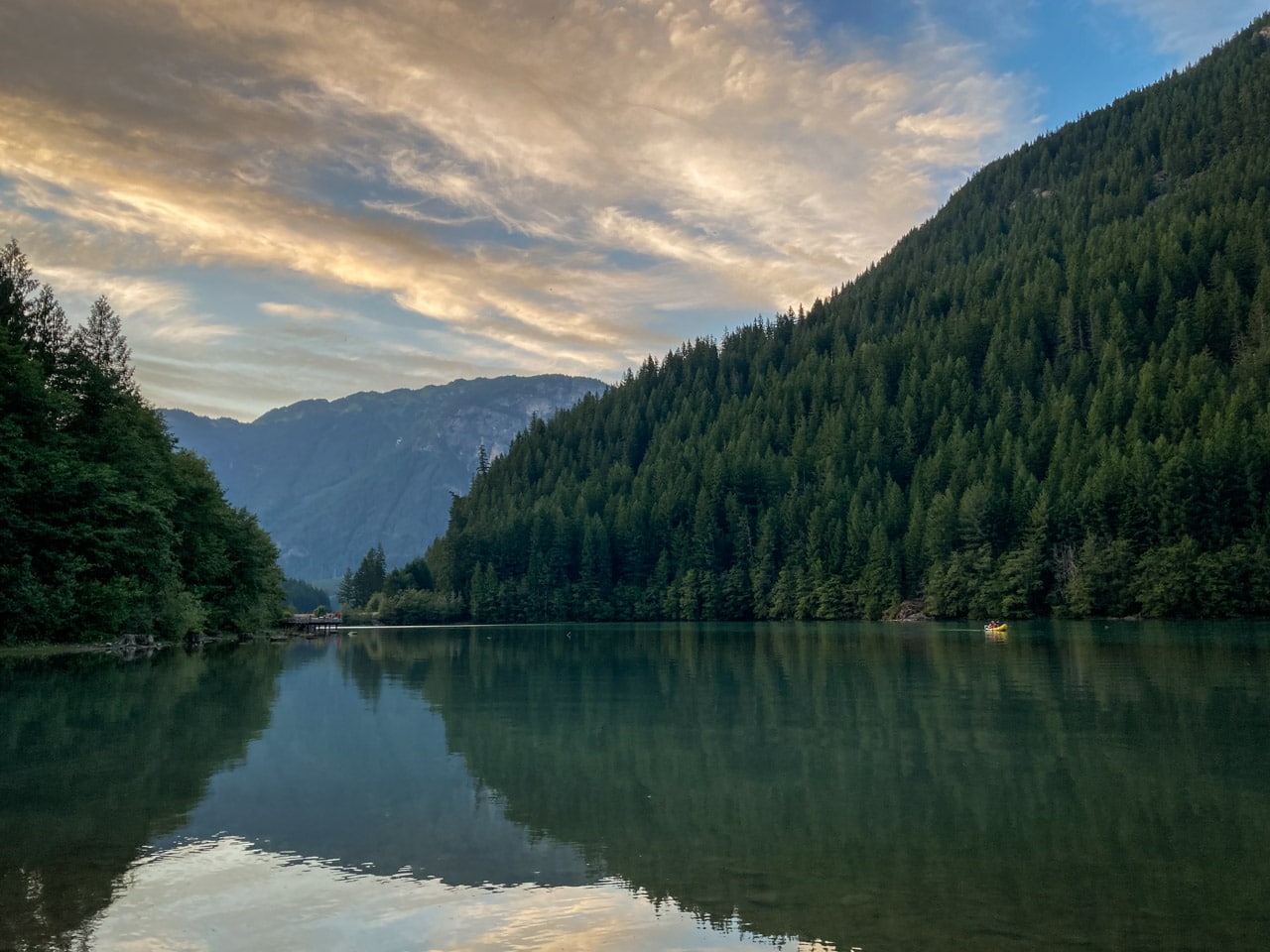
The view from the Diablo Lake Overlook in the North Cascades is one of the most iconic scenes in the National Park System.
Created by the historic Diablo Dam, glacial-fed Diablo Lake has an incredible turquoise color, resulting from fine rock particles suspended in the water.
In addition to enjoying that spectacular view, you can also swim and boat in this man-made lake. The best access is from the popular Colonial Creek Campground, which has a number of sites right on the lakeshore.
Swimming in Diablo Lake isn’t necessarily comfortable, though. The water comes from melting glaciers high above in the mountains and is always quite cold. But it’s definitely a memorable experience!
4. Summit Lake, Lassen Volcanic National Park (California)
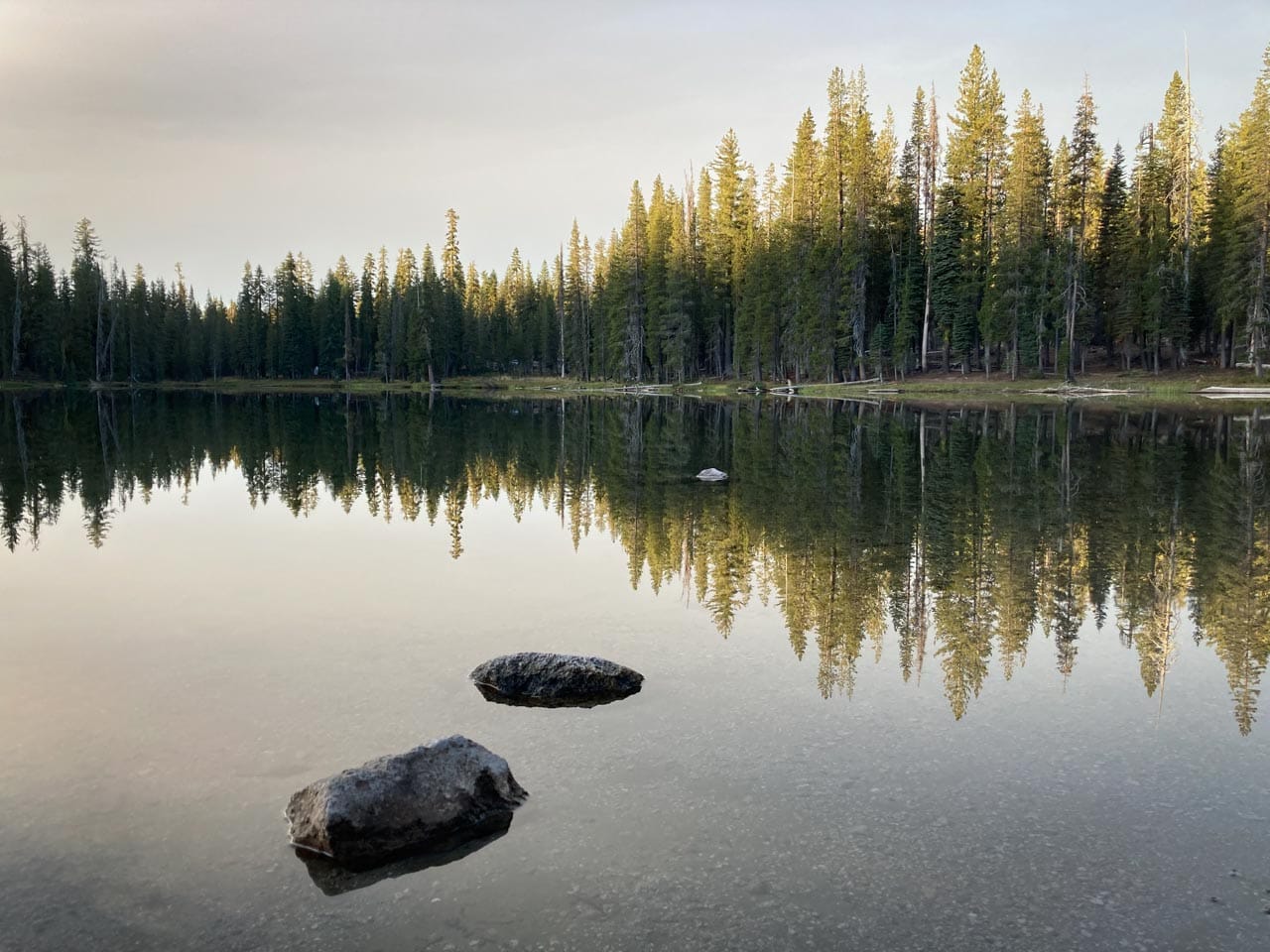
Swimming and wading is allowed in all 200+ lakes and creeks in Lassen Volcanic National Park, the only exception being the park’s hydrothermal areas.
Arguably the most beautiful lake to swim in at Lassen Volcanic is Summit Lake. This beautiful little lake is located roughly halfway on the Lassen Volcanic National Park Highway, in the very heart of the park.
Although it’s pretty small, the surrounding scenery is absolutely gorgeous. Two campgrounds sit on the lake’s shores, the Summit Lake North Campground and Summit Lake South Campground.
An easy 1-mile trail loops around the lake, while another trail leads deep into the Lassen Volcanic wilderness and to backcountry lakes like Echo Lake and the Twin Lakes.
From the lakeshore, as well as from the water itself, you can often see both Lassen Peak and Reading Peak, reflected perfectly in the lake’s pristine water.
5. Medano Creek, Great Sand Dunes National Park (Colorado)
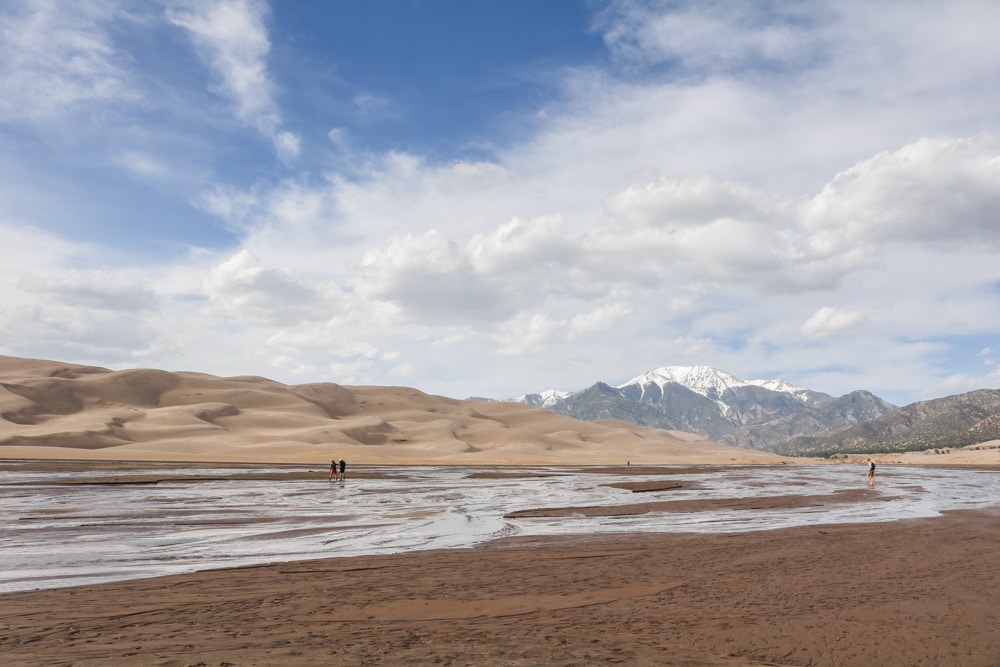
Although not a lake or pond, Medano Creek at Great Sand Dunes is without question one of the greatest swimming spots in the national parks for kids.
One of the most distinctive features of Great Sand Dunes National Park, Medano Creek runs past the park’s namesake sand dunes, which are the tallest in North America.
Fed primarily by melting snow up in the mountains, this seasonal creek usually reaches its peak flow in May. It typically begins flowing in April and dries up at the Dunes Parking Area by mid-July. Read more about the seasonal flows of Medano Creek here.
When the creek is flowing, and especially during a so-called “surge flow,” the water is quick enough and its level high enough to create waves over the sand.
These flows may allow children to float limited distances on flat inflatable toys. At other times when it’s flowing, Medano Creek is a fun “splash creek” for kids. Pets are allowed in Medano Creek as well, provided they’re on a leash.
6. Whiteoak Canyon, Shenandoah National Park (Virginia)
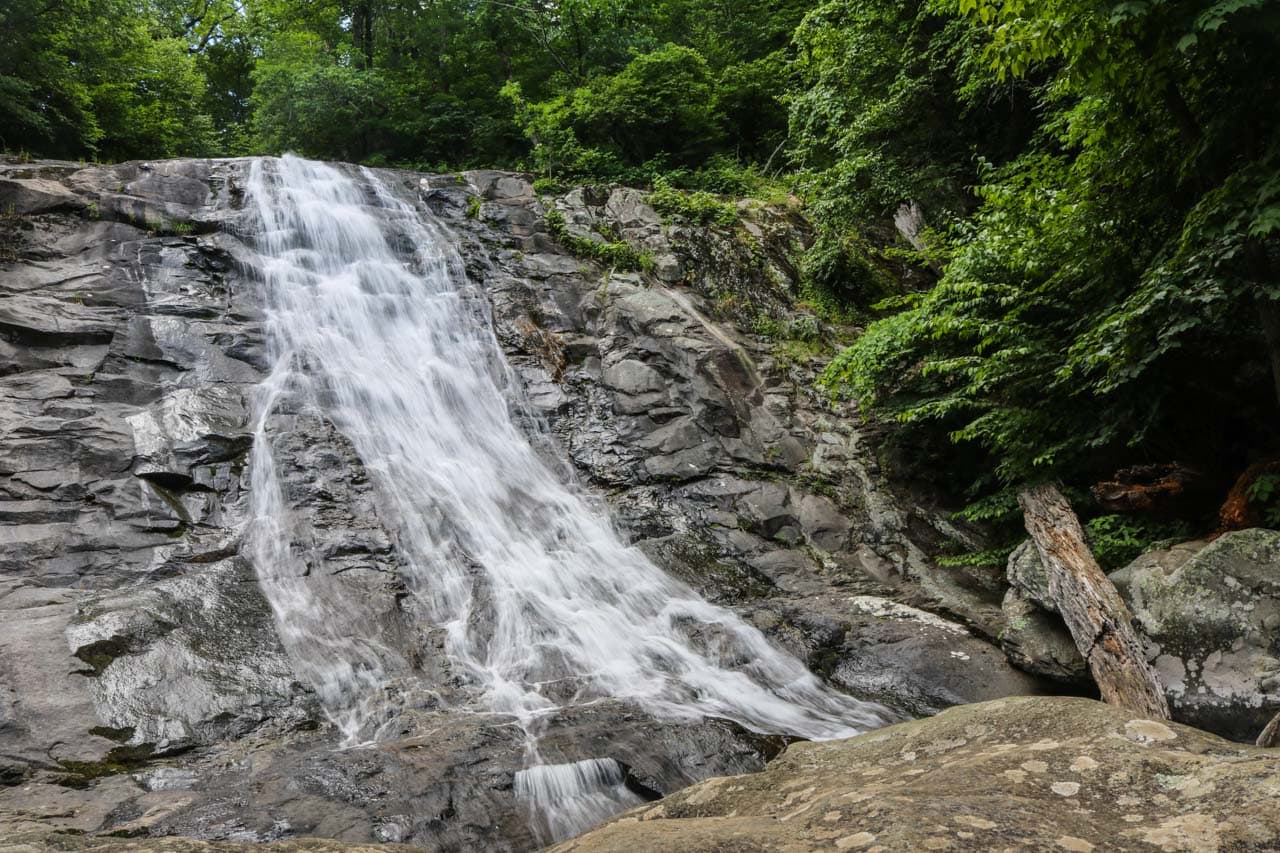
Running past no fewer than six waterfalls—three upper falls and three lower falls—the Whiteoak Canyon Trail is one of the most rewarding waterfall hikes in Shenandoah National Park. It is, however, also one of the park’s most difficult trails.
The trail descents from Skyline Drive through a rocky gorge to the foot of the mountains. Alternatively, you can also start the hike on the lower end of the trail.
Starting below and climbing up leaves the much easier descent for last, while a Skyline Drive start means that you’ll have to climb up on the way back. Either way, you’ll have to do the same amount of climbing.
The total roundtrip distance from the Skyline Drive trailhead down to the lowest waterfall is 7.3 miles.
What makes Whiteoak Canyon such a great hike to do in summer is the abundance of swimming holes. There’s a swimming hole at the bottom of basically every waterfall along this trail.
Note that these swimming spots are very popular, though, especially on hot summer days.
7. Crater Lake, Crater Lake National Park (Oregon)
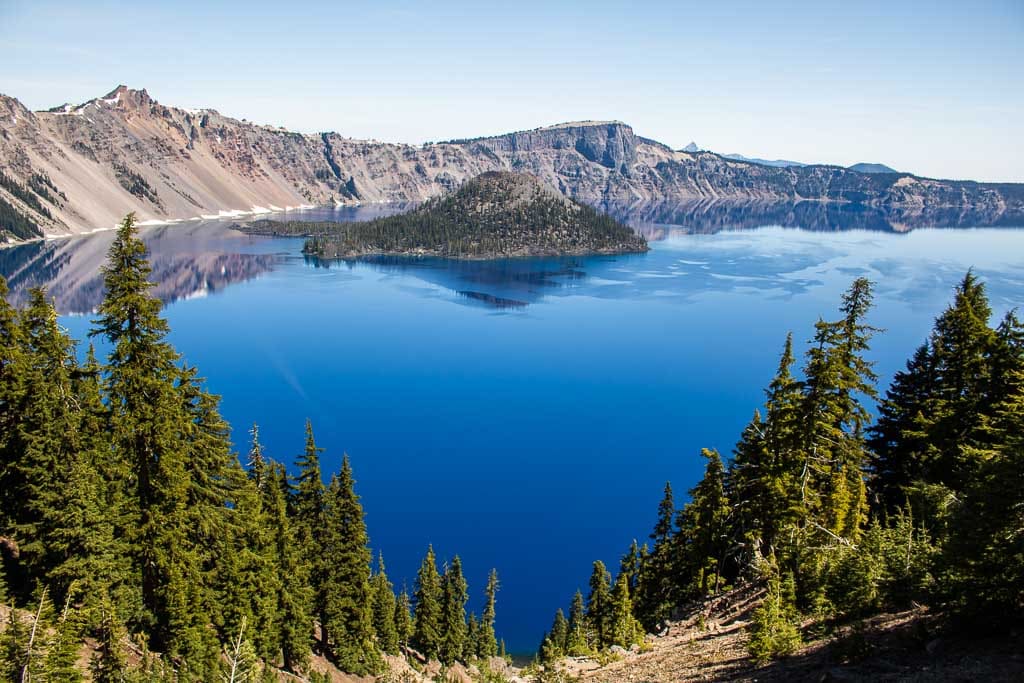
Yes, swimming is, in fact, allowed in Crater Lake. However, there’s “only one place where it’s safe and legal to get down to the lake shore,” the National Park Service says. And that place is the Cleetwood Cove Trail.
This steep and strenuous trail starts on the Rim Drive on the north rim of Crater Lake. Although the trail is only 1.1 miles long, it does drop 700 vertical feet in a series of switchbacks. The way back up can be challenging.
At Cleetwood Cove, you’re free to swim, splash and jump in the water as you wish. Remember, though, that only bathing suits and basic clothes are allowed to be worn in the water.
To protect Crater Lake’s incredibly clear water and prevent the introduction of invasive species, things like snorkeling gear, inner tubes, inflatable toys, personal life jackets, wetsuits, paddle boards and kayaks are not permitted. Also keep in mind that the water in Crater Lake can be surprisingly cold.
You can find more information about swimming in Crater Lake National Park on the park’s website.
8. String Lake, Grand Teton National Park (Wyoming)
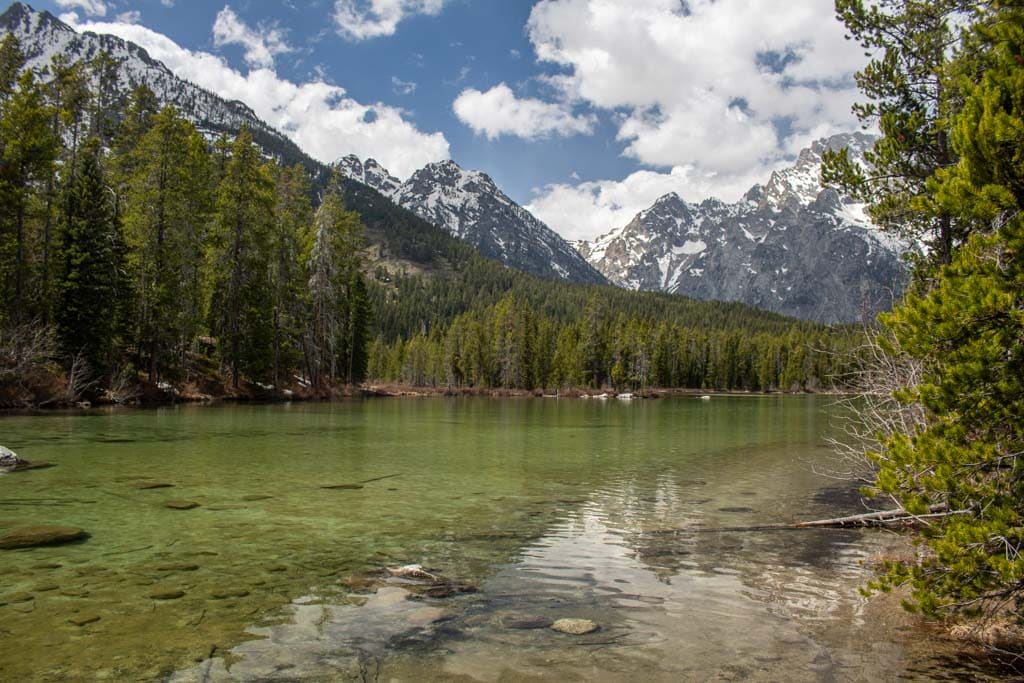
Unlike in Yellowstone National Park to the north, swimming is permitted in many lakes throughout Grand Teton National Park, from sprawling Jackson Lake to popular Jenny Lake and scenic String Lake.
These shimmering lakes are amazing places to cool off after a long day hike or on a hot summer’s afternoon. Chilly waters offer refuge from the summer sun, while the Teton Range provides a backdrop that is as spectacular as any.
Situated between Jenny Lake and Leigh Lake, String Lake is one of the best swimming spots in Grand Teton National Park.
Shallower than most other lakes in the park, this lake is actually able to warm up a bit throughout the summer.
Besides swimming, you can also kayak, canoe or stand-up paddle board in String Lake. A nice trail runs along its eastern shore, while various picnic spots provide views of the Tetons.
It’s important to mention that the String Lake area is home to several large animals. This includes moose, deer, and both black bears and grizzly bears. Knowing how to act when encountering one of these animals is essential.
9. Scorpion Anchorage Beach, Channel Islands National Park (California)
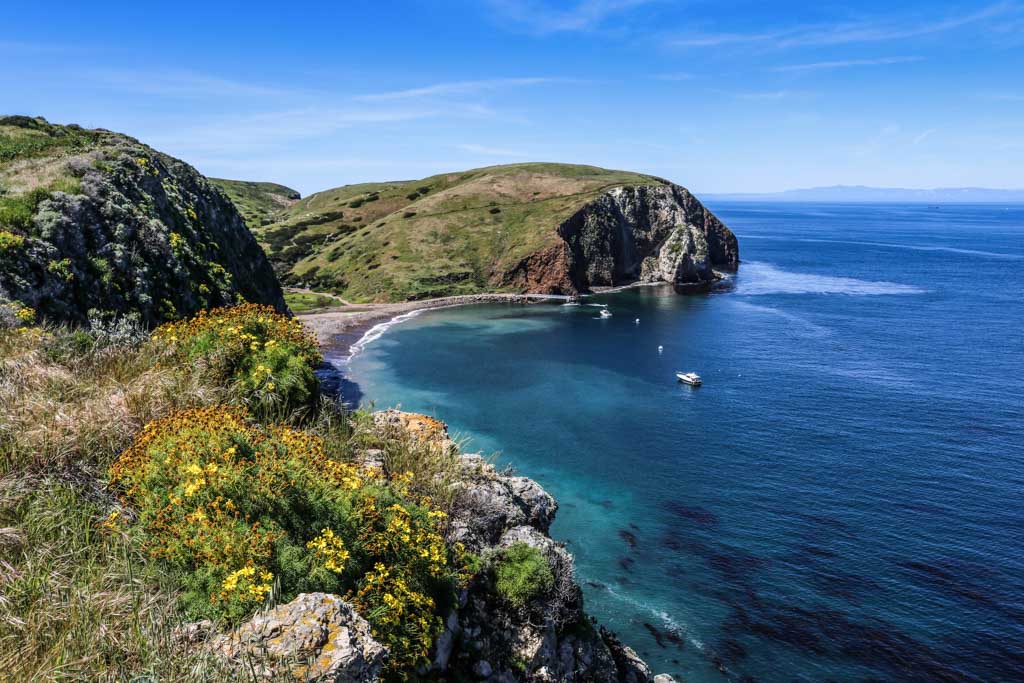
California’s Channel Islands are a popular destination among wildlife lovers, kayakers, fishing enthusiasts and campers.
This unique archipelago off the coast of Los Angeles comprises eight islands, five of which are protected as Channel Islands National Park.
Santa Cruz Island, in particular, is a much-visited destination, thanks to its direct Island Packers boat ferry to the mainland, beautiful wildflowers, great hiking trails and camping opportunities. The island also has a truly stunning beach at Scorpion Anchorage Beach.
The National Park Service calls “the mixed sand and cobblestone Scorpion Beach […] a world-class destination for swimming, diving, snorkeling and kayaking.”
There’s easy access to the beach and the pristine ocean waters, which are home to sprawling kelp forests. You can simply relax on the beach, taking in the gorgeous island scenery and going for dips in the Pacific Ocean.
Additionally, Scorpion Anchorage Beach is also a great launching point for sea kayaking, scuba diving and snorkeling excursions.
10. Thermal Baths, Hot Springs National Park (Arkansas)
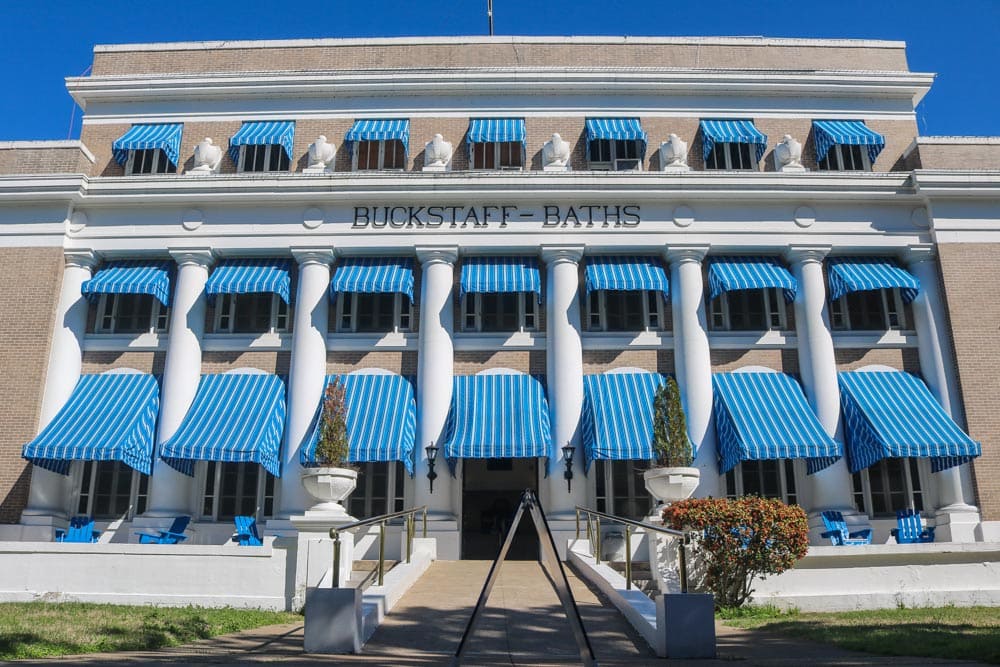
The thermal baths of Hot Springs National Park aren’t outdoor swimming spots, but they do deserve to be included in this list. After all, the park’s historic bathhouses do use national park water and offer superb spa services.
This isn’t swimming or water sports in the traditional sense, yet it’s an amazing national park experience to have.
Currently, two bathhouses on Hot Springs National Park’s Bathhouse Row are open to the public.
The Buckstaff Bathhouse has been in operation since 1912, making it the oldest still-operating bathhouse in the national park. Quapaw Baths & Spa, on the other hand, is the newest bathhouse on Bathhouse Row.
Both facilities use the thermal water of Hot Springs National Park in their soaking pools, mineral baths, steam cabinets and for numerous other spa features and services.
Other Beautiful Swimming Spots in the National Parks
Besides the amazing beaches, swimming holes and pools above, there are several other great swimming spots in the national parks. Other fantastic examples are:
- Trunk Bay, Virgin Islands National Park (U.S. Virgin Islands)
- South Swim Beach, Dry Tortugas National Park (Florida)
- West Beach, Indiana Dunes National Park (Indiana)
- Merced River, Yosemite National Park (California)
- Lake Crescent, Olympic National Park (Washington)
- Lake McDonald, Glacier National Park (Montana)
More Places to Swim in the National Parks System
You can find even more swimming locations in other National Park Service units.
The list above features only national parks, but there are, of course, many other designations in the National Park System, too. You can find many more swimming spots at the following places:
- Cape Cod National Seashore, Massachussets
- Cape Hatteras National Seashore, North Carolina
- Gulf Islands National Seashore, Florida and Mississippi
- Padre Island National Seashore, Texas
- Point Reyes National Seashore, California
- Sleeping Bear Dunes National Lakeshore, Michigan
- Pictured Rocks National Lakeshore, Michigan
- Ozark National Scenic Riverways, Missouri
- Lake Roosevelt National Recreation Area, Washington
- Lake Mead National Recreation Area, Arizona and Nevada
- Glen Canyon National Recreation Area, Arizona and Utah
- Whiskeytown National Recreation Area, California
- …








Have wanted to see the Sand Dunes but thought I had to hike in to see them. Now I get to see them and see the creek.
Nope, you can easily see them from the road, visitor center and parking areas!